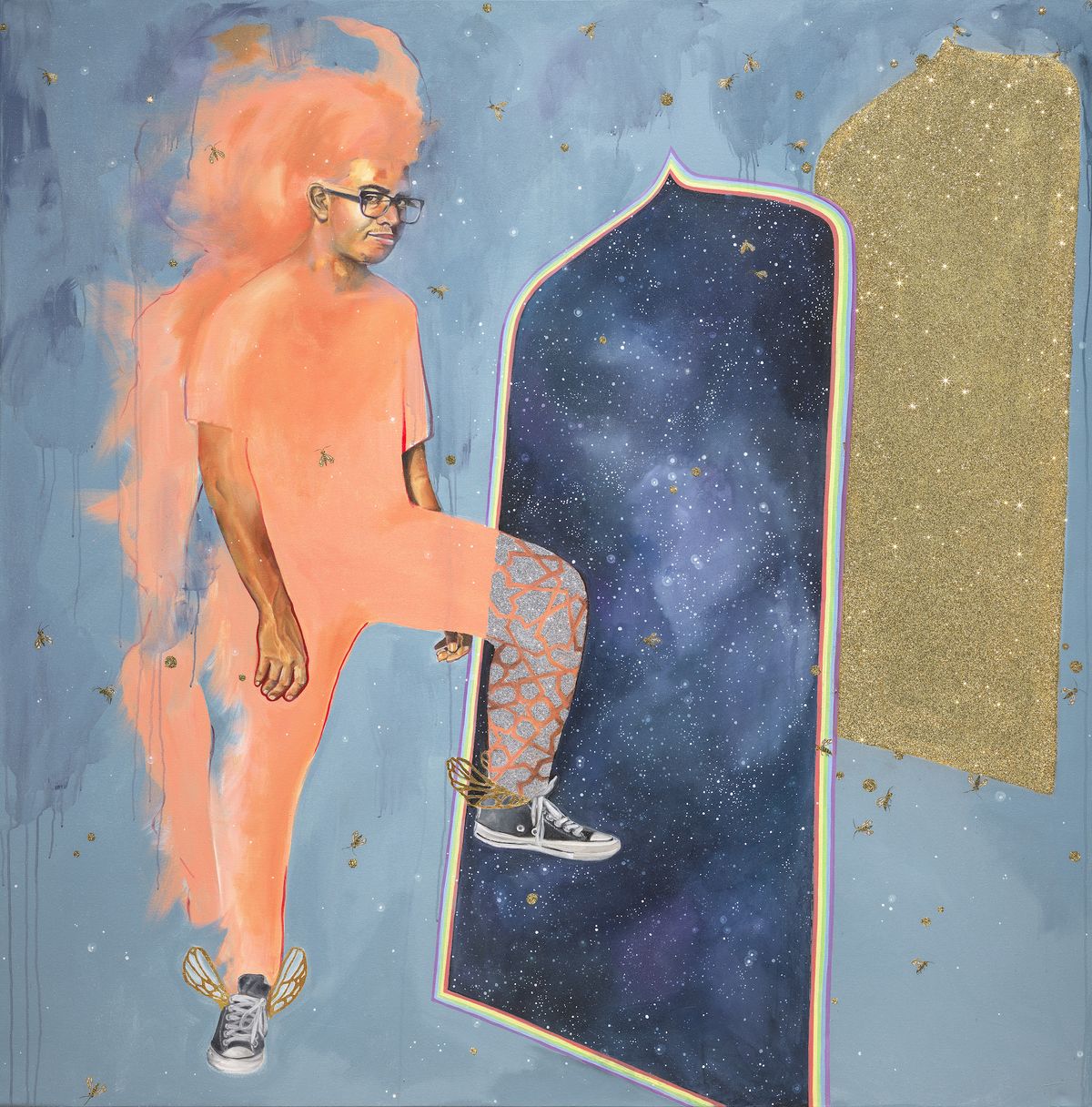Between trauma and healing lies the long road of recovery. Reckoning and Resilience: North Carolina Art Now, a new show at the Nasher Museum in Durham, North Carolina, explores the many steps along this journey. This is the third group show at the museum to champion works by North Carolina artists; it includes pieces by 30 artists who live in or are from the state, and whose practices weave history, family traditions and the local landscape into conversations about how these elements inform the present.
Curators at the Nasher took an unconventional approach to the show, soliciting and selecting artists who created work during the pandemic. “Rather than selecting artists to fit into a pre-existing curatorial framework, we wanted the works and the artists to tell us what the framework of the show is going to be,” says Marshall Price, the museum’s chief curator and contemporary art curator. This process allowed recurring themes to float to the surface, and what emerged were works that revolved around healing and trauma, often anchored by historical and familial ties.
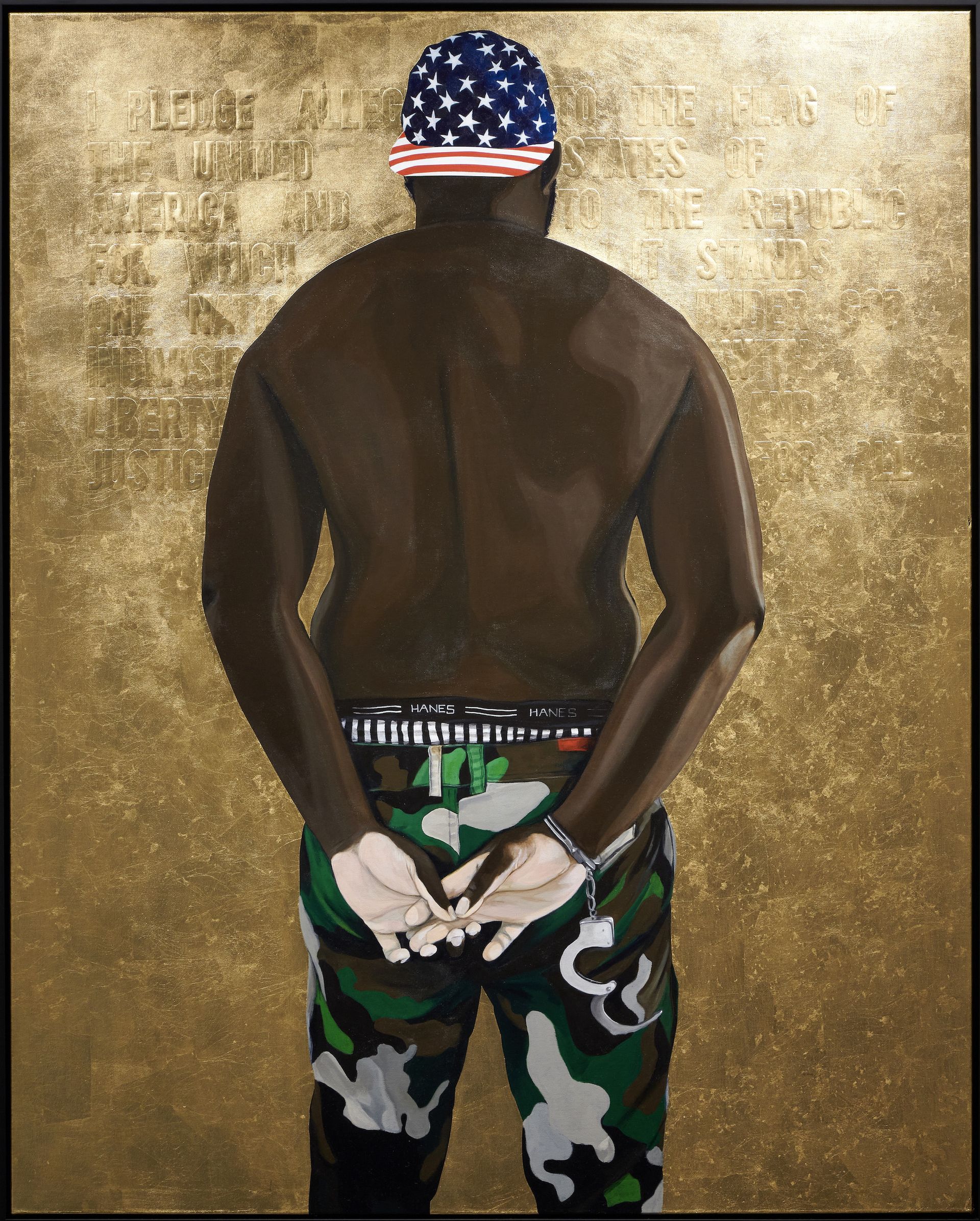
Clarence Heyward, PTSD, 2020 © Clarence Heyward. Image courtesy of the artist.
Portraits by Kimberley Pierce Cartwright and Clarence Heyward bookend the exhibition and illustrate the diversity of themes and materials represented. In Heyward’s shirtless self-portrait PTSD (2020), the artist depicts himself with his back to the viewer as he faces the text of the pledge of allegiance, rendered in gilded type. An American flag hat rests on his head. His right hand is not raised to his heart, as is custom; instead it is clasped behind his back with an unshackled handcuff attached. As this symbol of police presence hangs from his wrist, the image begs the question, “With liberty and justice for whom?”
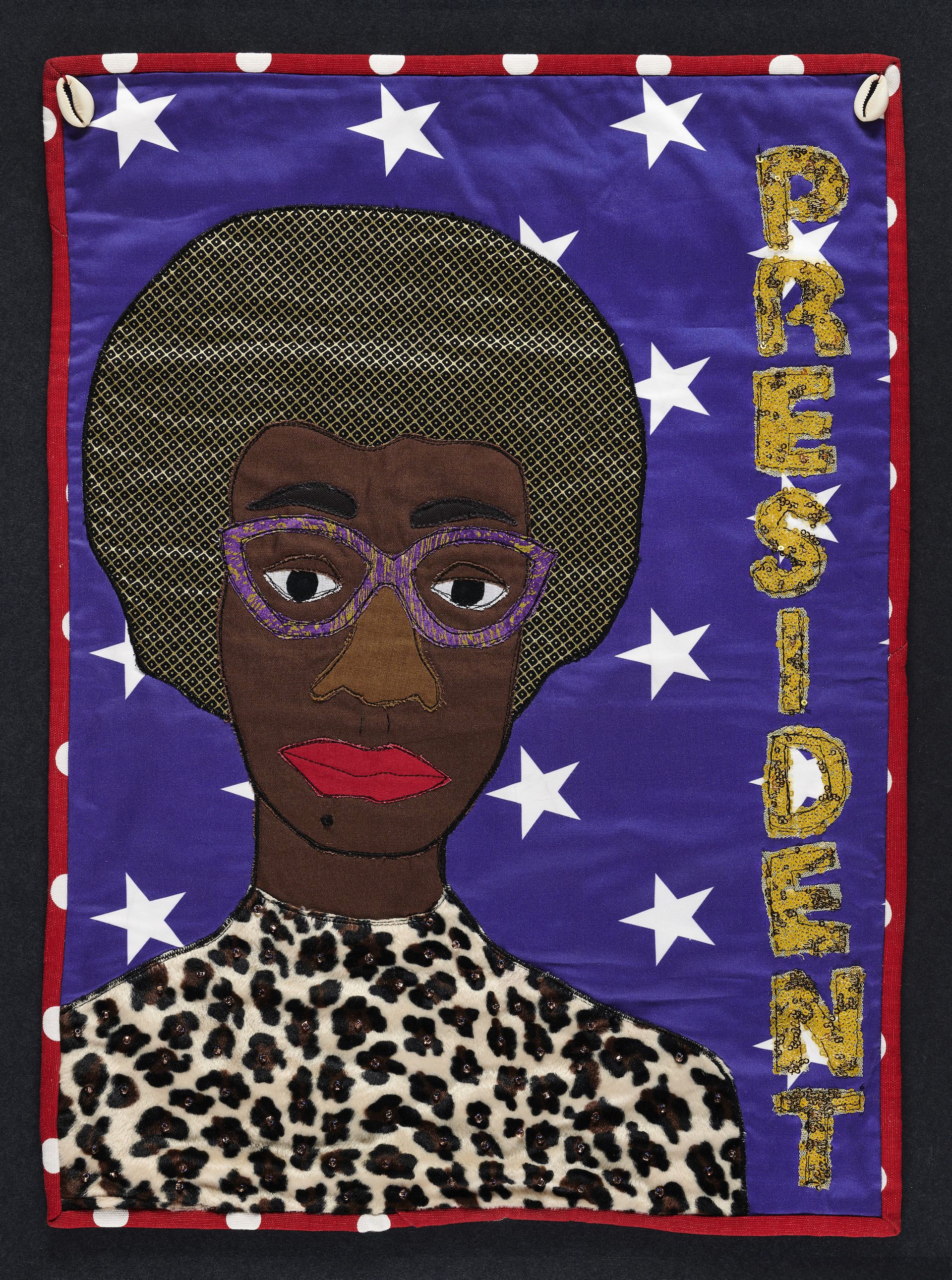
Kimberley Pierce Cartwright, Shirley for President, 2019 © Kimberley Pierce Cartwright. Image courtesy of the artist.
At the other end of the gallery, quilted portraits of Shirley Chisholm and Fannie Lou Hamer by textile artist Cartwright pay tribute to women who fought for social justice and political representation. In a third piece called North Star (2008), Cartwright turns to abstraction in a quilt that evokes the coded navigational tools that guided individuals fleeing slavery toward freedom. Nearby, a trio of photographic portraits of Black horseback riders by Kennedi Carter suggests a contemporary notion of freedom without restraint. Between these poles of constriction and freedom, a broad spectrum of more nuanced themes emerge.
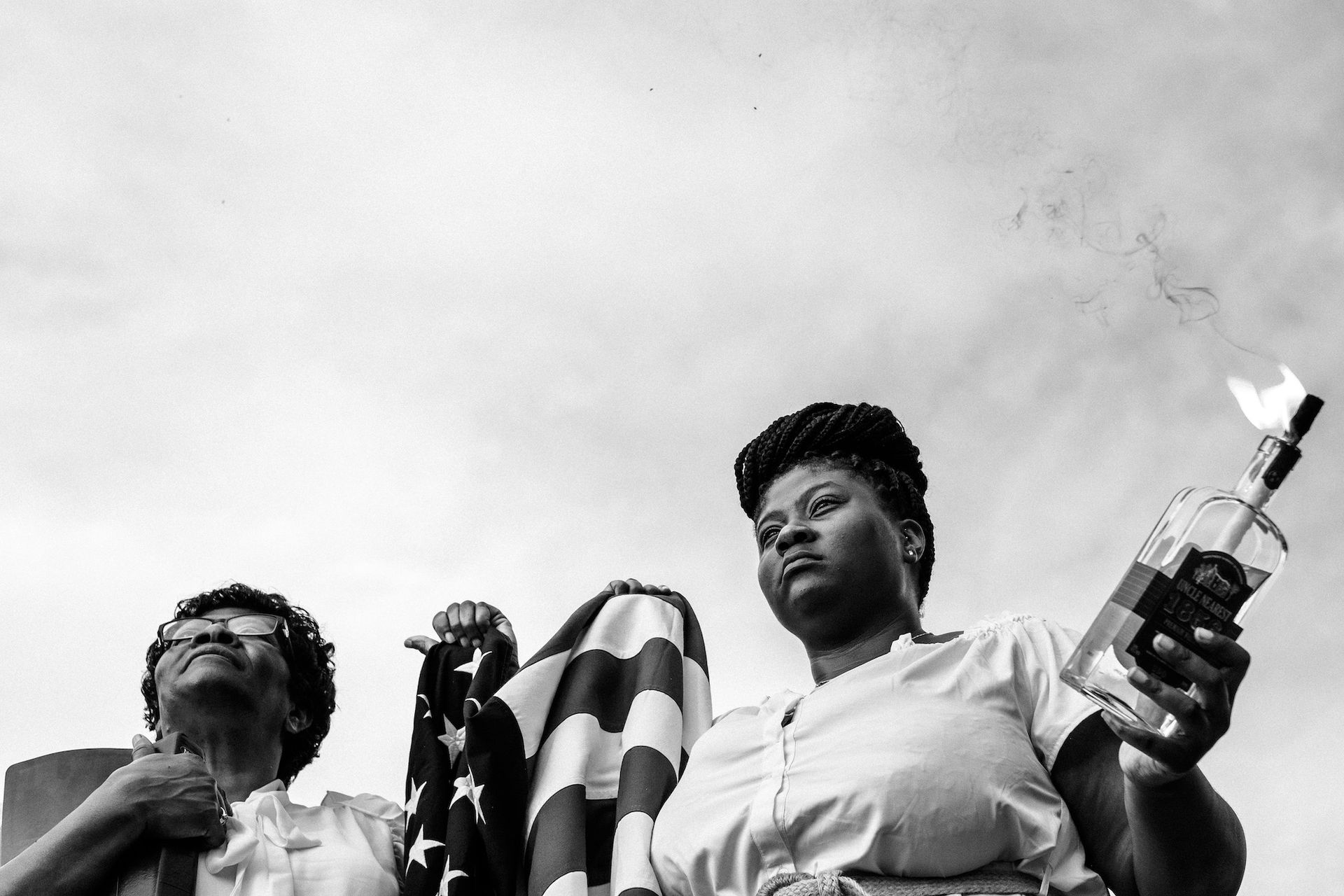
Cornell Watson, Righteous Rage (2020) © Cornell Watson, courtesy the artist
In a photograph by Cornell Watson called Righteous Rage (2020), two women stand together holding an American flag between them. The older woman on the left holds a bible to her chest, while the younger woman next to her holds a lit molotov cocktail. “Somewhere between prayer and burning it all down is the America we worked to build,” Watson is quoted saying in the exhibition’s wall text. Next to Righteous Rage is a piece called The Drowning (2020), a haunting image of a man who is lying on a US flag on a riverbank, and is partially submerged. The horror of the image is nearly eclipsed by an anecdote shared by the artist, recounting the day he shot the photograph. He recalled, “A white woman paddled by in her boat. She yelled to her husband, ‘Look honey! Look at the flag, that’s just not right!’ She could only see the flag submerged in the water and not us drowning in it.”
While Watson provides ample evidence of America’s blind spots, other artists guide our imagination toward more hopeful images in the vein of Cartwright’s North Star. Saba Taj explores borders and barriers in works that encourage us to abandon our mental constraints and imagine new terrain. Similarly, Ambrose Rhapsody Murray channels the memories of their family through layered textile collages covered with thin veils of chiffon that cascade beyond the borders of the picture frame, giving them an ethereal quality.
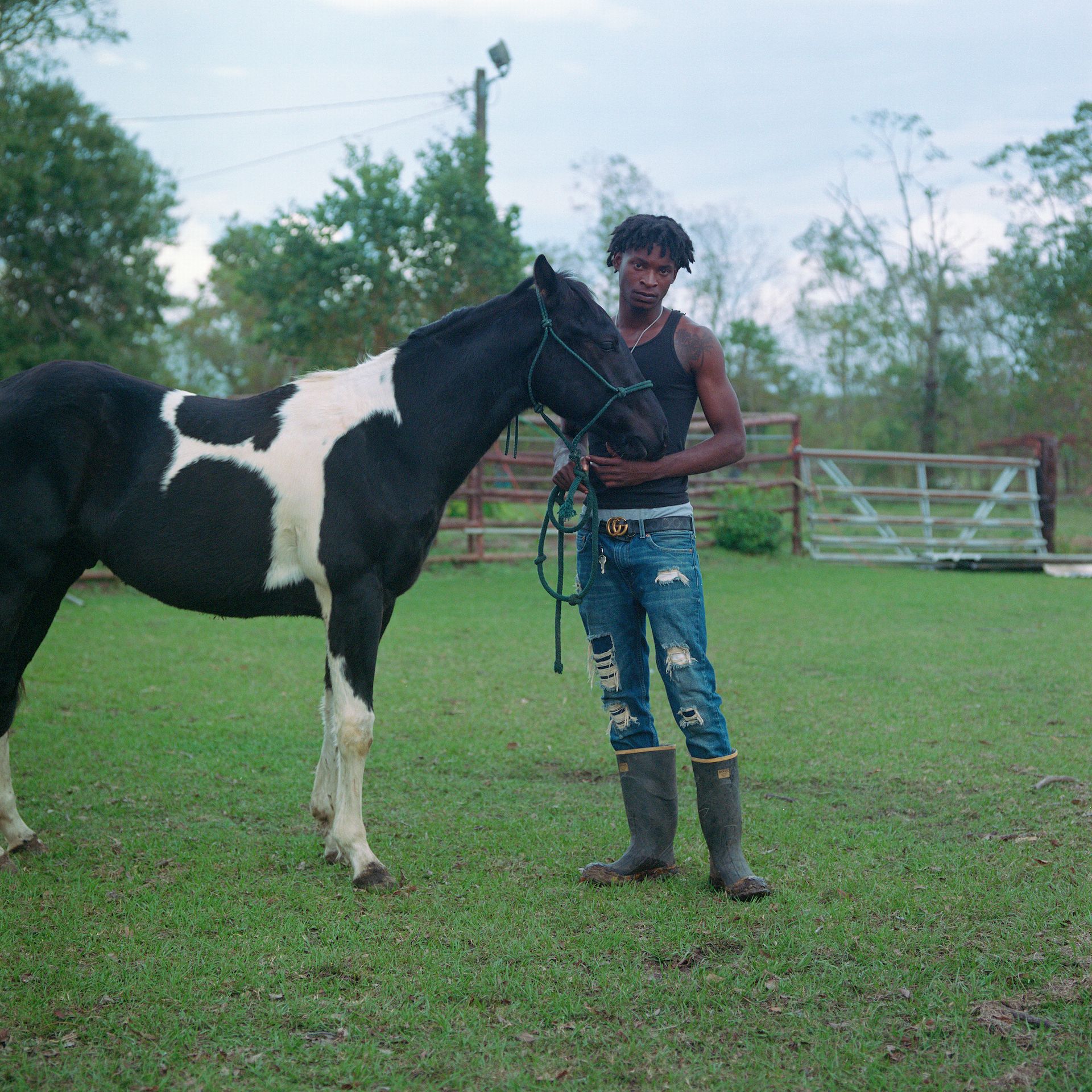
Kennedi Carter, Untitled from the series Ridin’ Sucka Free, 2020 © Kennedi Carter. Courtesy of the artist and Rosegallery.
The museum is planning additional programming that will supplement the critical dialogue taking place among the works in the exhibition. Nine podcast episodes will feature artists from the show paired with members of the local community to expand on the themes in their works. The podcast series will run alongside the exhibition starting in March.
The additional programming extends the reach of the exhibition to further showcase the caliber of work being created in North Carolina. “The artist community here is thriving,” says Price. “The museum has been focused primarily on work that exists at a national or international level, and this show has been a great opportunity for us to foreground the great work that’s being made in our backyard.”
As a snapshot of a particular moment in our recent history, Reckoning and Resilience scratches the surface in exposing the depth and breadth of artists creating work in North Carolina. The show also opens the door to a talented, growing community of artists from the South who are expanding the rich narratives emanating from the region.
- Reckoning and Resilience: North Carolina Art Now, until 10 July, Nasher Museum of Art


